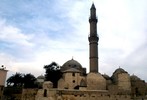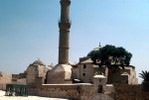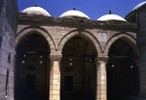Previous Lecture | Next Lecture
Concepts
The Ottomans: A Turkish dynasty named after its founder Osman, who ruled a small principality in the northwestern corner of Anatolia after the Mongol invasion of the thirteenth century. The Ottomans fulfilled an Islamic dream of eight centuries in conquering Constantinople (renaming it Istanbul) and formed the largest Islamic empire of its time which comprised the Balkans, Greece, Anatolia, Syria, Iraq, Egypt, the Holy Cities of Arabia, Algeria and Tunisia. The Ottomans acquired the title sultan in 1394, and the ultimate title caliph after the conquest of Egypt in 1517. The empire was dissolved after the First World War.
The Janissary Corps: A distortion of the Turkish Yeniceri (the New Army), the most privileged corps of the Ottoman army established in the 14th century and staffed from the recruits levied as boys from the non- Islamic provinces of the Ottoman empire (the Devshirme system). High administrators were usually drawn from its ranks. The Janissary Corps of the province of Egypt was stationed at the Citadel of Cairo.
The Church of Hagia Sofia (Ayasofia): (532-37) The building that most affected the Ottoman architects and patrons as an object of admiration and imitation. Its huge central dome on four elephant piers was a masterpiece of engineering that many Ottoman architects and patrons felt the need to surpass. The most famous Ottoman architect, Sinan, is reported to have felt relieved only when he completed his dome of the Selimiye Mosque at Edirne which equaled the width of Ayasofia's dome.
The Mosque of Suleiman Pasha al-Khadim at the Citadel: (1528) First Ottoman mosque in Egypt, it was built at the Citadel to serve the Janissary Corps. Its architecture has very little to do with Cairene architecture (except for the marble mosaic revetment). It introduced to Cairo the pencil Ottoman minaret and the central-domed plan.
The Mosque of Mahmud Pasha: (1567) Facing the Citadel, this mosque is a true late Mamluk mosque with a pure Ottoman minaret. Its architect might have been compelled by the presence of powerful Mamluk examples nearby (Sultan Hasan and Qani Bay Mosques) to echoes their styles.
The Takiyya of Suleiman Pasha: (1543) Takiyya is the Ottoman term for khanqah. This Ottoman style sufi hostel retains some Mamluk influences especially in the facade. Its mihrab's inner niche is off center to correct a mistake in calculating the Qibla direction.
The Mosque of Sinan Pasha in Bulaq: (1571) A hybrid Mamluk-Ottoman building, this mosque was part of a larger complex (only a hammam is left) that formed the center of this riverine port. Its stone dome surrounded by turrets and its squat minaret give it a definite Ottoman feel, although many of its structural details are Mamluk.
The Mosque of Shaykh al-Burdayni: (1616-29) This little mosque was sponsored by an Egyptian faqih. This may explain its Mamluk pastiche style, especially its revivalist minaret. The mosque's facade shows another way to adapt to the urban environment: it curves with the bent street line.
Monuments







